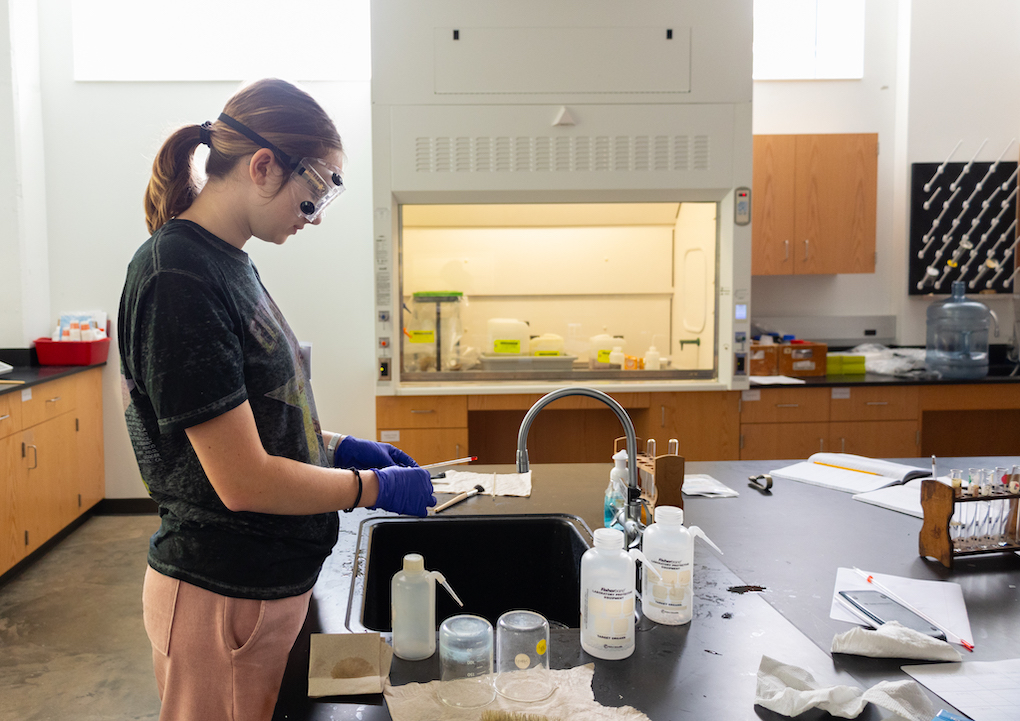Science is everywhere. It is in everything that we can see, taste, touch, and hear. In chemistry, we explore matter and the changes that it may undergo. At VAMPY, students dive deeper through physically experiencing what makes our world run! They accomplish this through analyzing and hypothesizing about natural “phenomena ” to make sense of the reactions that drive the world around us. This fosters a natural curiosity about the world and a desire to investigate what really shapes the universe!
In Trevor Webster’s chemistry class, one of his goals is that campers have an exciting experience in the lab. Students will find themselves executing at least one lab everyday in class. We are always asking questions and creating hypotheses about new possibilities in these labs. Campers will always find themselves creating something new, or proving a scientific possibility. Sort of like an arts and crafts class with more applications to the real world. Campers enjoy the lab so much one of the first questions heard every morning is, “What are we doing in lab today?”
Throughout the class, we have covered topics relating to nuclear chemistry, periodic table trends, types of chemical reactions, properties of elements, electrons, bonds, and many more topics. In the lab, we reinforced these topics by providing a visual result of natural phenomena. For instance, campers executed a flame lab where they were able to see what color could be produced after burning different salts. Additional investigations include chemical and physical changes, the emission spectrum, separations, and glass cutting. These labs allow students to actively see what we are learning in real time and their applications.
This year the students were granted the opportunity to go to the US Space and Rocket Center in Huntsville, Alabama where they were able to explore chemistry in a space exploration setting. Alongside other vampy courses the students were able to learn lots about rocket creation, the space race and moon rocks! In addition to the trip, the chemistry students will be touring the electron microscope lab here at Western! Students are shown how we research and study elections on a microscopic level with the help of Dr John Andersland. This oincludes how electrons and light travel on an atomic level!
Since the beginning, these campers have taken the challenges we have presented them and continued to excel. They have asked insightful questions, developed cooperation skills, and skillfully interpreted laboratory details. Hopefully, they continue to ask questions about the world around them and see how it can connect to chemistry!


